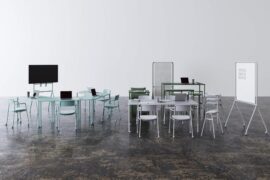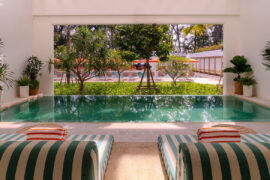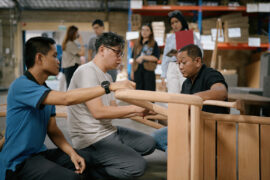The Nintendo game Animal Crossing has taken the world by storm and it turns out the interior designs that work in the real world have been a big help to people designing their ‘virtual spaces’.

April 30th, 2020
For many people the release of one of the most anticipated games of the year, Animal Crossing: New Horizons on the Nintendo Switch, flew right under the radar. You could be forgiven for dismissing this cute game about building your own settlement on an island with a group of friendly animals as ‘something for the kids’ but the game has very much hit the mainstream. Since its release a month ago, Animal Crossing has been attracting players of all ages worldwide, even actor Elijah Wood has apparently built his own Island home in game.
And while there have been some reports of it destroying the odd relationship or two:
My (27/F) partner (28/M) doesn't understand why I am upset that he "ruined" my game. https://t.co/Vo4HYAXBG2 pic.twitter.com/pD5tJ5jCJ4
— relationships.bsky.social (@redditships) April 29, 2020
The game has been pretty well received. So well received that some, desperate to improve their virtual homes, have enlisted the aid of interior designers. Digital video game publication Polygon has recently released a video explaining how interior design techniques applied to the game can be used to make players virtual spaces feel more like a home:
And somehow they actually work. Despite this being a game where a raccoon landlord constantly harasses you for the rent you owe him these real world techniques when applied make the virtual spaces roomier and more like a place you’d actually want to live. You can also invite friends who have the game around to check out your newly designed spaces, something that, because of COVID-19, we can’t do in real life anymore.
In fact there’s a good chance the Animal Crossing world is now better than the real one. They have their own economics system:
Are you ready for… Animal Crossing economics?
You'll want to trade those Bells for Nook Miles Tickets, trust me https://t.co/Q42UKV1eCw
— Emma Kent (@GoneEFK) April 22, 2020
You can visit art galleries:
Getty Museum opens up art collection to Animal Crossing fans, letting players import more than 70,000 artworks into the game https://t.co/gYUbV0F358 pic.twitter.com/P3pDsN4Cs8
— Polygon (@Polygon) April 16, 2020
And like we said earlier impress your friends with your amazingly designed spaces:
I may have panicked slightly when @jameshamilton lured me into his back room. #AnimalCrossing #ACNH pic.twitter.com/PZ8SISZO0D
— dual-wielding daddy (@tobiwilsonline) March 26, 2020
actually… maybe scratch that last one.
INDESIGN is on instagram
Follow @indesignlive
A searchable and comprehensive guide for specifying leading products and their suppliers
Keep up to date with the latest and greatest from our industry BFF's!

London-based design duo Raw Edges have joined forces with Established & Sons and Tongue & Groove to introduce Wall to Wall – a hand-stained, “living collection” that transforms parquet flooring into a canvas of colour, pattern, and possibility.

Welcomed to the Australian design scene in 2024, Kokuyo is set to redefine collaboration, bringing its unique blend of colour and function to individuals and corporations, designed to be used Any Way!

With experience across fashion, styling and interiors, Nicholas Gilbert launches Studio Nicholas with a mission to elevate Australian design on the world stage — and to champion a more rigorous, professional future for the industry.

Opening in October 2025, The Standard, Pattaya Na Jomtien brings together ONION, DIN Studio, Studio Lupine and Verena Haller to create a sculptural modernist retreat where art, architecture and coastal culture meet.
The internet never sleeps! Here's the stuff you might have missed

The American Hardwood Export Council (AHEC) has collaborated with leading Indonesian designer Hendro Hadinata on the KARANA Collection, unveiled at Indonesia Design Week (IDW).

In this comment piece by Dr Matthias Irger – Head of Sustainability at COX Architecture – he argues for an approach to design that prioritises retrofitting, renovation and reuse.